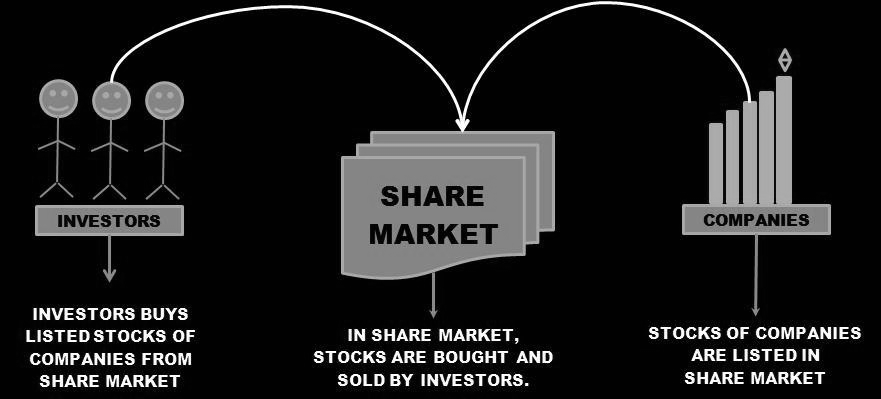A beginner s guide to the share market
Post on: 20 Апрель, 2015 No Comment

- Good gains over past two decades
- Portfolio values slashed in half over past year
- Guides and tools. Learn more about Money
INVESTORS who shun the share market have had a good run in the past few years, with the second-biggest collapse in Australian history slashing the value of many portfolios in half.
However, those who held their nerve have still made good gains in the past year and great gains over two decades.
Here are some key terms.
All Ordinaries Index
This is the most popular way for Australians to measure the share market’s performance.
The All Ords represents the moves in market value of the nation’s top 500 listed companies, so if it rises 1 per cent, it means the combined value of all those stocks is up 1 per cent.
A common name for the Australian Securities Exchange. ASX is also a company and has shares that can be bought and sold on the ASX. Confusing?
Fund managers and analysts prefer to follow the S&PASX 200 Index rather than the All Ordinaries. That way, they only have to focus on the biggest 200 stocks and can ignore some of the smaller players.
The ASX200 and All Ordinaries indices move in similar patterns.
This is what investors around the world suffered during the global financial crisis.
Ord Minnett senior adviser Nick Ross says it’s a market where share prices are generally falling and there are expectations of further falls in price.
A market where share prices are generally rising and there are expectations of further increases in prices, Ross says. Last year, we enjoyed a bull market, but things have been much gloomier in 2010.
Good investors monitor the cash flow of their stocks. Australian Stock Report head of research Geoff Saffer says cash flow is important to a company’s health. Although a company can be profitable, it may not be generating enough cash to pay its bills, he says.
A relatively new way to invest, Contracts for Difference mirror the performance of a share or index but are highly volatile and risky. Saffer says CFDs offer the benefits of trading shares without having to physically own them.
You are making a deal with the CFD provider, almost like a bet, to exchange the difference between the opening and closing prices of the share or index, he says.
CFDs are leveraged instruments that demand a sound trading strategy.
Many companies pay their shareholders dividend income twice a year.
A related term is dividend yield, which shows the income paid by a share in percentage terms similar to how bank account interest is measured.
For example, if the market price is $1 per share and the dividends on that share are 6, the yield would be 6 per cent, Ross says.
Dividend imputation
Also known as dividend franking, this is a key benefit for share investors, as they get a tax credit attached to their dividend income. The credits entitle shareholders to a rebate on tax already paid by the company that is distributing dividends, Ross says.
For most companies, the tax credit equals the 30 per cent company tax rate, which means retirees and super funds get a bigger benefit from dividends that are fully franked.
Marius Kloppers
This former South African soldier runs Australia’s biggest company, BHP Billiton, which generated a $6.9 billion net profit for the six months to December 31. BHP dominates the share market, alone comprising more than 10 per cent of the All Ordinaries index.
Saffer says options are the most common form of share market derivative. They allow a trader to buy or sell a share at an agreed price at some point in the future.
You only need to trade that share if it goes in the direction you want. If it goes the other way, you have the option not to take the trade, he says. You pay a fee for this privilege.
The Price Earnings ratio is the most common way that share market analysts value a company. The formula is a company’s market value divided by its annual profit, or its share price divided by earnings per share.
The P/E ratio is the easiest valuation technique for novice investors but when used in isolation, it can disguise poorly performing companies as cheap, and strong, growing companies as expensive, Saffer says.
Short selling
This is when traders sell a stock they don’t already own, hoping to buy it back at lower prices.
An order you give your broker to sell your shares once they drop to a certain price. The strategy can stop bad trades from spiralling out of control.
Underlying profit
A company’s net profit or headline profit can be skewed by events such as business sales or asset write-downs, but underlying earnings are seen as a better performance indicator.
Warren Buffett
He is one of the world’s richest investors, worth more than $US47 billion ($57 billion). Australian Stock Report’s Geoff Saffer says Buffett amassed his fortune by following a few basic rules of investing.
Buffett invests only in companies that have predictable future earnings, strong cash flows and a dominant market position, he says.














